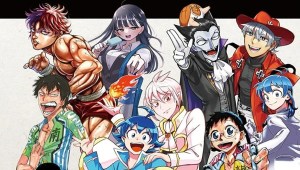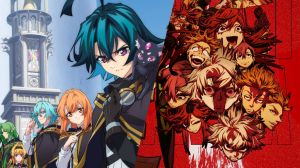Japanese artist Peach Momoko presents the X-Men through a new cultural lens in Demon Days: X-Men #1, the first installment in a series of one-shots in which Momoko reimagines the Marvel Universe. Momoko is best known for variant covers that attract fans and collectors with skill and style that stand apart from other artists working in the American comics industry. It’s those skills that are the biggest draw for Demon Days: X-Men #1. Momoko tells a tale inspired by Japanese folklore with graceful linework and a fluid watercolor aesthetic, enhancing a lean, straightforward story.
Videos by ComicBook.com
It’s the appeal of a variant cover applied to a full-length comic. Momoko puts her spin on popular established characters, not only the X-Men but the wider Marvel Universe as well with Venom and the Hulk transformed into yokai. Psylocke becomes Sai, a traveling warrior, and Logan is her wolf companion. Jubilee is Juju, a jushi, or Japanese exorcist who battles evil spirits.
Momoko’s redesigns are brilliant. Both visually and in the narrative, the folklore she’s drawing from takes primacy. It’s Japanese mythology with a Marvel universe glamour. The company’s characters are stretched and contorted to fit into the legend rather than the other way around.
Sai is instantly recognizable as Psylocke’s analog because of her clothing’s color palette and her role as a swordsman, but she displays no aspect of Psylocke’s mutant abilities. It’s the same for Juju, dressed in yellow and with pink eyepaint standing in for Jubilee’s signature visor sunglasses in a thoughtful touch. Momoko could easily have made Jubilee’s fireworks part of Juju’s magic, but instead opts for a more realistic depiction of the human character, better to contrast them with the magical yokai. Even when dealing with Venom and Hulk, innately fantastic characters in their own right, she instead applies their names to folkloric creatures like Orochi and oni.

Though she occasionally weighs her layouts too heavily on one side, Momoko proves a capable storyteller. There’s a subtle softness in Sai’s eyes, framed by a crest of shadow when she discovers that Hulk is a father protecting his child. There’s a dancer’s gracefulness to her fight scenes, with one particularly stunning moment as Tsuki, a young village warrior, cartwheels over the oni, vaulting over his head and landing in the next panel to strike. Pitting Sai against Venom allows Momoko to contrast the fluidity of the warrior’s sword strikes—at one point appearing like a whirlpool of motion—against the yokai’s oozing tendrils, the black appendages standing out against the watercolor world around them. And it only takes one panel of Juju sprawled and pampered in golden luxury to understand her demeanor, with her nature coming to the fore in a shot of the sprightly sorceress setting off fireworks.
The only out-of-place piece of the visual package is some early lettering. The issue employs captions like parchment to quickly get readers up to speed on the nature of the world they’re entering. It’s a solid idea, but there’s not enough effort to ingrain these panels into the issue’s overall aesthetic. The captions are overly bold for Momoko’s more subdued palette. It’s a distraction, even if a surprising framing device revealed late in the story may explain why they appear that way.
But for all its beauty, this is a simple tale. For many Americans, Hayao Miyazaki’s animated films are the primary touchstone for understanding Japanese culture, both popular and traditional. Momoko’s story in Demon Days: X-Men #1—that of humans and spirits trying to coexist but unable to find common ground—may remind them of Princess Mononoke, but with the thematic teeth removed. Sai is a wandering warrior with an understanding of yokai, an archetype that fans of anime will likely be familiar with, but there’s little else to say about her character. She shows up and applies her knowledge and fighting skills to the situation and resolves the problem. There’s not much else to consider but a token environmentalist underpinning through an early suggestion that human expansion has upset the world’s balance.
The previously mentioned unexpected framing device that emerges towards the end of this issue suggests Demon Days‘ scope is significantly greater than retelling Japanese folklore with Marvel’s proper nouns attached, even if that’s all there is to this first issue. But it speaks to the power of Momoko’s art that such a simple story told with her artistic style and skill can still leave such a strong impression.
Published by Marvel Comics
On March 3, 2021
Written by Peach Momoko
Art by Peach Momoko
Translated by Zack Davisson
Letters by Ariana Maher
Cover by Peach Momoko








